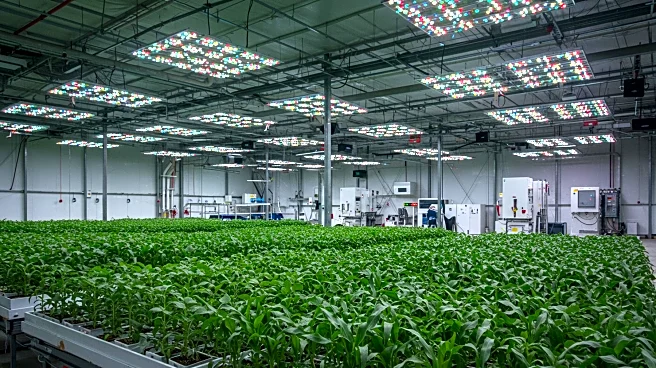What is the story about?
What's Happening?
Corn and soybeans are finding new roles in various industries, beyond their traditional uses in animal feed and ethanol production. These crops are now being utilized in textiles, tires, plastics, and even medical applications. For instance, NeuEsse, a biotech company, has developed a soy-based skin substitute for burn victims, which is in the final stages of FDA approval. Additionally, soy-based firefighting foam and Goodyear's soybean oil-infused tires are examples of sustainable alternatives being developed. The United Soybean Board and Iowa Corn Promotion Board are investing in research to expand the use of these crops, aiming to increase demand and provide sustainable solutions.
Why It's Important?
The diversification of corn and soybean uses is crucial as traditional demand sources are stabilizing. By creating new markets, these innovations can help maintain profitable prices for farmers. The development of sustainable products also aligns with growing consumer demand for environmentally friendly options. This shift not only supports the agricultural sector but also contributes to reducing reliance on fossil fuels. As global population growth slows, the agricultural industry must adapt by adding value to commodities, ensuring economic viability and environmental sustainability.
What's Next?
The continued development and commercialization of corn and soy-based products are expected. Companies like Goodyear and NeuEsse are expanding their product lines, while Iowa Corn is working on new projects like corn-based vinyl acetate monomer. These efforts are supported by investments from various agricultural boards and private companies. As these products gain market acceptance, they could significantly impact the agricultural landscape, offering new revenue streams for farmers and contributing to a more sustainable economy.
Beyond the Headlines
The shift towards sustainable agricultural products highlights a broader trend of integrating environmental considerations into industrial processes. This movement could lead to long-term changes in how industries source raw materials, potentially reducing the environmental footprint of manufacturing. The success of these innovations may also influence policy decisions, encouraging further investment in sustainable agriculture and renewable resources.
AI Generated Content
Do you find this article useful?











